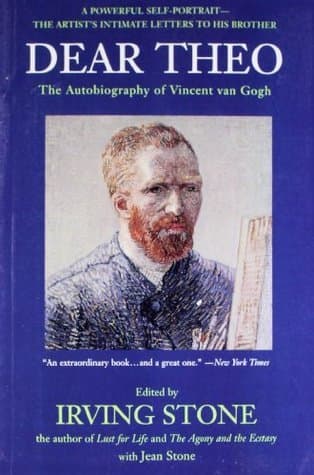
Book Review Summary: Dear Theo
Introduction
"Dear Theo" is a book that offers a unique and intimate glimpse into the life and creative processes of Vincent van Gogh, one of the most celebrated artists in history. This book is a collection of letters written by van Gogh to his brother Theo, providing readers with a firsthand account of his thoughts, feelings, and experiences. In this article, we will explore the book's content, analyze readers' views, and summarize the reasons why readers recommend it.
About Vincent van Gogh
Vincent van Gogh was a Dutch post-Impressionist painter who is known for his bold use of color and his innovative style. Born in Groot-Zundert, Holland, van Gogh was the son of a pastor and was deeply influenced by his religious upbringing. He struggled with self-confidence and had unsuccessful romantic relationships before deciding to pursue a career in art. Van Gogh's early works were somber and heavily influenced by Dutch realism, but he later adopted the Impressionist style and began to experiment with color and light.
Throughout his life, van Gogh faced numerous challenges, including mental illness, financial hardship, and personal turmoil. Despite these obstacles, he continued to create art and express himself through his letters to Theo. These letters provide a raw and honest portrayal of van Gogh's inner world, revealing his deepest fears, hopes, and aspirations.
Analysis of Views
-
Introspective and Personal: Readers appreciate the book's introspective nature and the way it allows them to delve into van Gogh's inner thoughts and feelings. They find it fascinating to see the artist's vulnerability and the struggles he faced throughout his life.
-
Insight into Artistic Processes: Many readers find the book valuable for its insights into van Gogh's artistic processes. They appreciate his detailed descriptions of his techniques, his approach to color, and his views on art in general. These insights provide readers with a deeper understanding of van Gogh's creative mindset.
-
Portrayal of Mental Illness: The book sheds light on van Gogh's mental illness, which played a significant role in his life and career. Readers find it moving to see how he dealt with his struggles and how they impacted his art. They appreciate the book's portrayal of mental illness and its impact on an artist's life.
-
Emotional Connection: Readers feel an emotional connection with van Gogh through his letters. They empathize with his struggles, admire his determination, and appreciate his honesty. The book creates a sense of intimacy between the reader and the artist, allowing them to form a deeper understanding of his life and work.
-
Inspirational Nature: Many readers find the book inspiring, particularly those who are artists or aspire to be creative themselves. Van Gogh's passion for art, his dedication to his craft, and his willingness to overcome obstacles serve as a source of inspiration for readers seeking to pursue their own artistic endeavors.
Reasons for Recommendation
-
Intimate Portrayal: The book offers an intimate portrayal of van Gogh's life and art, providing readers with a unique perspective on his creative process and personal struggles. This intimacy creates a strong emotional connection between the reader and the artist.
-
Insights into Artistic Philosophy: "Dear Theo" provides readers with valuable insights into van Gogh's artistic philosophy. His thoughts on color, form, and the role of art in society offer a fresh perspective on the artist's work and contribute to a deeper understanding of his creative vision.
-
Historical Significance: As one of the most influential artists in history, van Gogh's life and work have been widely studied and analyzed. "Dear Theo" offers a primary source that provides readers with direct access to his thoughts and feelings during his lifetime. This historical significance adds depth and context to van Gogh's artistic legacy.
-
Emotional Resonance: The emotional resonance of van Gogh's letters is a significant factor in recommending this book. Readers find themselves deeply moved by his vulnerability, his struggles, and his ultimate sacrifice for his art. This emotional connection makes "Dear Theo" a compelling read that stays with readers long after they have finished the book.
Conclusion
"Dear Theo" is a powerful book that offers readers an intimate glimpse into the life and creative processes of Vincent van Gogh. Through his letters to his brother Theo, van Gogh reveals his deepest feelings, artistic aspirations, and personal struggles. The book provides valuable insights into van Gogh's artistic philosophy, shedding light on his approach to color, form, and the role of art in society. "Dear Theo" is recommended for those who are interested in art history, those seeking inspiration from an artist's journey, or those looking for a poignant portrayal of mental illness in an artist's life. The emotional resonance of van Gogh's letters and the intimate portrayal of his life make this book a powerful and memorable read that leaves a lasting impression on readers.